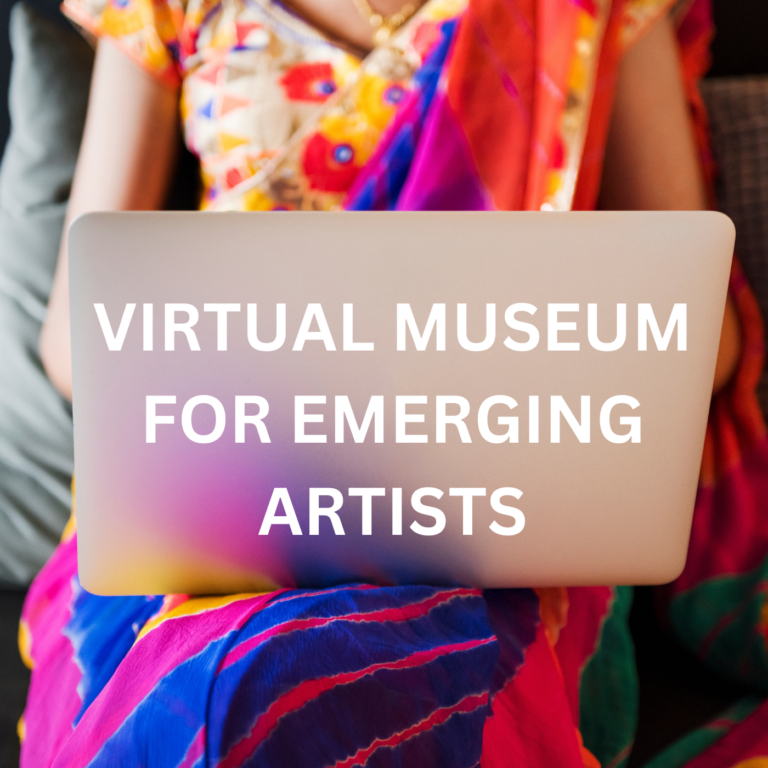Building a Virtual Museum for Emerging Artists: A Vision for Art and Innovation
The concept of a Virtual Museum for Emerging Artists is more than just a platform—it’s a transformative movement designed to democratize the art world. Traditional art spaces often prioritize established names, leaving new talent struggling for visibility. A virtual museum levels the playing field, offering emerging artists a space to showcase their work, connect with audiences, and gain recognition. For art lovers, it provides an innovative way to experience and discover art from anywhere in the world.
If you’re passionate about art, technology, and providing opportunities for untapped talent, this idea could be your perfect fusion of purpose and profit. In this article, we’ll explore how you can create a virtual museum, what tools and strategies you’ll need, and why this business model is both sustainable and impactful.
Why a Virtual Museum is Needed
The art world has long been criticized for its exclusivity. Traditional galleries and museums often have high entry barriers, focusing on established artists while sidelining new talent. This leaves many talented individuals without a platform to showcase their work. A virtual museum addresses these issues by offering:
- Accessibility: Artists from anywhere in the world can exhibit their work without the need for physical space or high costs.
- Affordability: Lower operational costs allow you to make the platform accessible to both artists and viewers.
- Global Reach: Virtual spaces transcend geographical boundaries, enabling a global audience to engage with diverse art forms.
- Innovation: A virtual museum integrates technology into the art experience, appealing to younger, tech-savvy audiences.
Key Features of a Virtual Museum for Emerging Artists
To make your virtual museum successful, it should cater to both artists and visitors. Here are the key features to consider:
1. Artist Portfolios
Provide each artist with a dedicated space to display their works, share their stories, and connect with audiences. Include options for:
- High-resolution images of artworks.
- Artist bios and contact information.
- Links to social media or personal websites.
2. Virtual Galleries
Use interactive 3D technology to create immersive virtual galleries. Tools like Artsteps or Kunstmatrix can help you design realistic spaces where visitors can explore exhibits as if they were in a physical museum.
3. Art Sales Platform
Enable artists to sell their works directly through your platform. Incorporate e-commerce functionality with secure payment options and commission structures that benefit both artists and the museum.
4. Events and Workshops
Host virtual events like artist talks, live painting sessions, or workshops. This adds value for both artists and visitors, creating opportunities for interaction and learning.
5. Membership and Subscription Plans
Offer premium memberships for exclusive benefits such as early access to exhibits, discounts on artwork, or access to private virtual tours.
6. Community Features
Build a sense of community by integrating forums, comment sections, or live chat features where visitors can discuss the artwork and interact with artists.
How to Build Your Virtual Museum
Creating a virtual museum involves careful planning, the right technology, and a strong vision. Here’s how you can get started:
1. Define Your Mission and Vision
Start by identifying your goals. Are you focusing on specific art styles, regional artists, or a global platform? A clear mission will guide your branding, content, and target audience.
2. Develop a Website
Your website is the foundation of your virtual museum. It should be visually appealing, user-friendly, and optimized for both desktop and mobile devices.
Key Elements of the Website:
- A homepage that showcases featured artists or exhibits.
- Easy navigation with clear categories for different art styles or exhibitions.
- A secure e-commerce system for ticket sales, memberships, and artwork purchases.
- A blog or news section for updates on events and featured artists.
Tools to Consider:
- WordPress with gallery plugins for customization.
- Wix or Squarespace for drag-and-drop website builders.
- Shopify for integrating e-commerce features.
3. Choose the Right Technology for Virtual Exhibits
To create immersive virtual galleries, consider using tools like:
- Artsteps: A free platform for designing 3D virtual exhibitions.
- Kunstmatrix: Offers customizable virtual gallery spaces.
- Matterport: For high-quality 3D virtual tours of physical spaces.
These tools allow you to design galleries where visitors can navigate using their mouse or touchscreen, providing a realistic and interactive experience.
4. Secure Funding
Launching a virtual museum requires an initial investment for website development, software subscriptions, and marketing. Explore funding options such as:
- Crowdfunding: Platforms like Kickstarter or Indiegogo can help you raise funds while building an audience.
- Grants: Look for art and culture grants from organizations or government bodies.
- Sponsorships: Partner with brands or businesses interested in supporting emerging artists.
5. Curate the Art
Develop a process for selecting and curating artworks. Consider open calls for submissions, where artists can apply to showcase their work. Collaborate with art curators or critics to ensure high-quality exhibits.
Monetization Strategies
A virtual museum can be both impactful and profitable. Here are some monetization strategies to sustain your platform:
1. Admission Fees
Charge visitors a small fee to access certain exhibits or premium content. You can also offer free exhibits to attract a wider audience and upsell paid experiences.
2. Art Sales
Take a commission on every piece sold through your platform. For example, you could charge a 20-30% commission on artwork sales.
3. Membership Plans
Introduce subscription plans for art enthusiasts. Benefits could include unlimited access to exhibits, exclusive content, and discounts on art purchases.
4. Sponsorships and Partnerships
Collaborate with brands, art supply companies, or tech firms to sponsor exhibits or events. This provides an additional revenue stream and boosts credibility.
5. Merchandise
Sell branded merchandise such as T-shirts, mugs, or prints featuring artworks from your exhibits.
Marketing Your Virtual Museum
To attract artists and visitors, you need a solid marketing strategy. Focus on building a strong online presence and engaging with your target audience.
1. Social Media Marketing
Use platforms like Instagram, Pinterest, and Facebook to showcase featured artworks and promote upcoming events. Create visually appealing posts and use hashtags like #EmergingArtists or #VirtualMuseum.
2. SEO Optimization
Optimize your website with relevant keywords such as “virtual art museum,” “platform for emerging artists,” and “buy art online.” Publish blog posts and articles to boost search engine rankings.
3. Email Marketing
Build an email list of visitors and artists. Send newsletters with updates on new exhibits, upcoming events, and exclusive content.
4. Influencer Collaborations
Partner with art influencers or bloggers to promote your museum to their followers.
5. PR and Media Outreach
Pitch your museum to art magazines, blogs, and online media. Highlight its unique mission to democratize the art world.
The Benefits of a Virtual Museum
Starting a virtual museum isn’t just a business opportunity—it’s a way to make a difference. Here’s how:
- For Artists: Provides a platform to gain visibility and sell their work without the constraints of traditional galleries.
- For Art Lovers: Offers a unique and accessible way to experience art, regardless of location.
- For Society: Promotes diversity and inclusivity in the art world by showcasing untapped talent.
Conclusion
A Virtual Museum for Emerging Artists is a powerful idea that combines art, technology, and purpose. By creating a space for new talent to shine, you can democratize the art world while building a sustainable business. Whether you’re passionate about art or looking for an innovative way to make an impact, this concept is both meaningful and profitable.
Start by defining your vision, building a robust platform, and curating exceptional art. With the right tools, marketing strategies, and commitment, your virtual museum can become a global hub for creativity and inspiration.



